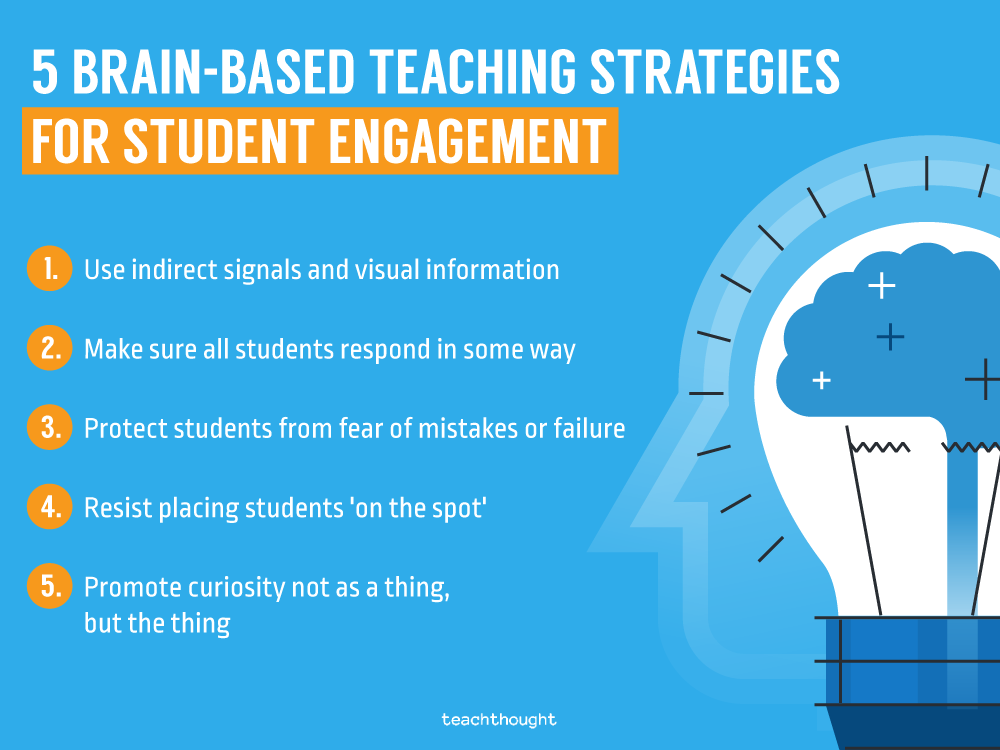What Brain-Based Teaching Strategies Can Improve Student Engagement?
contributed by Judy Willis M.D., M.Ed., radteach.com
Judy Willis is a neurologist turned educator whose work focuses on the brain–how it works, and how teachers can respond.
Below, she offers simple ways to help all students to stay engaged during teaching and learning.
5 Brain-Based Teaching Strategies To Keep Students From Turning Off Their Brains
1. Use indirect signals and visual information
As an example, you might use different color font, ink, or highlighter to indicate content priority rather than saying “This is super important and will be on the test.”
Also, a variety of visual cues can be used to help learners absorb and recall information. Among the most effective are posters, wall-mounted video displays, PowerPoint presentations, and a variety of other media.
2. Make sure all students respond in some way
They can attempt an answer, ask a question of their own, or make some related prediction or evaluation. They can also respond to a non-content-related question from the teacher (e.g., “Where would you start answering this question? What information would you need to form an intelligible response?)
Predictions and responses force the brain to engage at least on some level. That, or they make it clear there is zero engagement to begin with.
3. Protect students from fear of mistakes or failure
This can happen in a number of ways, including making student practice responses (rather than just ‘test’ answers) private. To accomplish this, you can use individual whiteboards, or even twitter, texts, etc.
Fear is a powerful ‘demotivator.’ Put students in situations where they believe they can be successful.
4. Resist placing students ‘on the spot’ unless responding ‘on the spot’ is what you’re assessing
You might feel like you’re preparing students for the ‘real world’ by asking them to stand and articulate a complex response–and you might be right. But what you’re also assessing is simply their ability to resist fight or flight response.
Use elbow partner activities like ‘turn and talk’ time as a bell-reinger. Quick conversations or call-and-response activities are a great way to provide students with time to process what they’ve just read, discuss, and clarify problems they may have had while completing homework. This strategy can be implemented as a bell-ringer or even a kind of ‘exit slip.’
5. Promote curiosity not as a thing, but the thing
Set the tone for your classroom. A positive classroom environment will foster students’ abilities to learn when they feel safe and supported. This kind of environment also makes it easier for your students to be curious and open-minded. From the start, you can help guide your class by setting a tone in which students feel physically and emotionally safe to learn.
Strategies that make students curious–such as breaking routines–is important to not only keep students engaged, but to allow them to ‘activate’ their brains. Research about the relationship between curiosity and learning isn’t entirely clear, but the connection is. Curiosity activates background knowledge, promotes comfort and activity, engages the brain, helps students persist in the face of failure, and countless other desirable academic behaviors.
For further reading on curiosity, you can find our post on learning strategies that make students curious.
